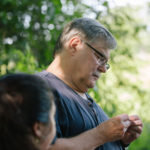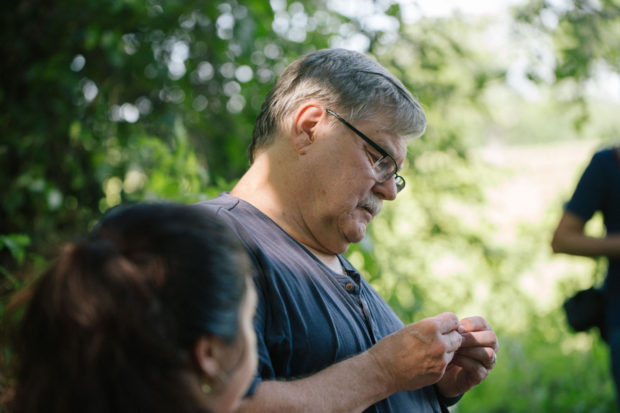

Research from anthropology professor Kenneth Brown will appear in the new Smithsonian National Museum of African American History and Culture, which opened on Saturday. | Courtesy of Media Relations
A new museum from the Smithsonian Institute will house several pieces of African-American history uncovered by a UH faculty member.
Kenneth Brown, an anthropology professor and an African-American studies affiliate, will display artifacts discovered during an excavation at the Magnolia Plantation in Louisiana at Washington D.C.’s Smithsonian National Museum of African American History and Culture. The museum opened last Saturday.
In his research, Brown used materials excavated from former plantations to interpret how enslaved people adapted their lifestyles to the American slavery institution.
“We found the curer/midwife’s cabin, a hunter’s cabin, a seamstress’s cabin, a carver’s cabin, the elder’s cabin, the church,” Brown said. “We could begin to identify the functions of several cabins because of what had been left behind.”
Crucial history
By exploring what he called “the abandonment level,” in which there is physical evidence of the plantation tenets suddenly moving away, Brown discovered the creation of an African community.
Brown said enslaved people made dedicated efforts to preserve their traditions by embedding African symbolism into everyday objects. For example, they carved holes in cardinal directions on lockets and made glass buttons etched with six-point stars.
“They were making these things so they could actually be wearing these important symbols without anybody calling them anything but a very nicely decorated button,” Brown said.
Brown explained that the preservation of African heritage was essential to the resilience of the community.
“All early African-American cemeteries are on flowing bodies of water so that if the spirit chooses to, it can get on the body of water that gets you to Africa — they can go home,” Brown said. “Those may sound like pretty strange beliefs, but they are beliefs that weren’t driven out of them by enslavement. They were beliefs on which they built their communities and on which they trained people.”
James Conyers, faculty director of UH’s African-American Studies department, echoed the importance of Brown’s research in regard to understanding enslaved culture.
“In looking at those communities, a lot of that information has been suppressed,” Conyers said. “(Brown’s research) provides alternative questions about who these people are.”
Conyers said much of the literature about slavery upheld that enslaved people took a position of submission, which Brown’s research hopes to discredit.
“If you don’t have a culture — and this is a key component of Dr. Brown’s work — then in a dotted- line way, you’re inferring that the people are not human,” Conyers said. “When (Brown) presents these things, looking at currency, looking at objects that they used to eat, objects they used to carve, once you start to draw those parallels, it provides a different set of questions to go back and look at the historical record.”
Students’ support
Conyers said Brown’s work is going beyond the economics of slavery to raise questions of human value. He added that in addition to Brown’s artifacts, the artwork of University of Houston-Downtown’s professor Floyd Newsum will also be shown at the museum.
“For two faculty members, one an anthropologist and one an artist, to be showcased at the Smithsonian — that puts the University of Houston system on the map,” Conyers said. “It supports the banner of Tier One at a high level.”
Brown also supported the University’s Tier One status by having his students engage in hands-on research.
“They did all the digging,” Brown said. “A lot of the work was done by students taking the Archaeological Field School. So they were in the process of learning how to do archaeology, but as far as I’m concerned, they should learn on an actual project. So they did.”
Katherine McElvaney, president of the Anthropology Society at UH, said getting involved with research is how students narrow down their interests and contribute to the department.
“It helps you find your independent strengths, which will benefit you in the long run academically and in a future professional career,” McElvaney said. “Not to mention it’s also a challenge, which will help you grow and learn in new ways.”
While Brown described being featured at the Smithsonian as “a neat feeling,” he wanted people to recognize the meaning behind his findings.
“What we’re trying to do is show that Africans — when they came to this country — yes, they adapted to the situation they found, but they did so in ways that manifest African traditions,” Brown said. “It’s just another way of looking at how people tried to survive an incredibly oppressive system.”
news@thedailycougar.com
—
“Slave culture research showcased at new Smithsonian museum” was originally posted on The Daily Cougar
